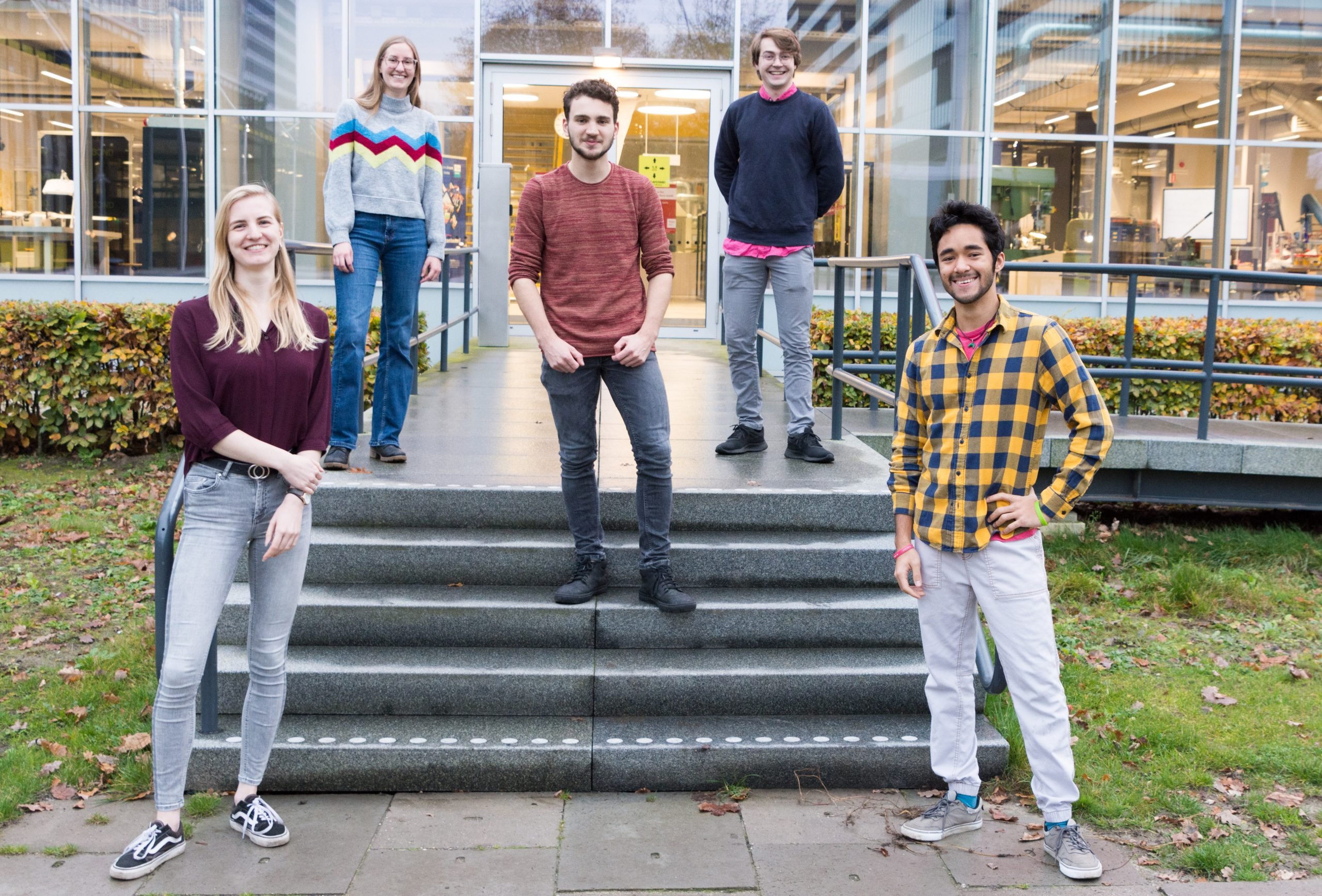
Even though the reduction of CO2 emissions is a mandatory requirement in the Netherlands, the process of cutting down on CO2 emissions is proceeding at an exasperatingly slow pace. Urgenda, an organization that is dedicated to speeding up the process of making the Netherlands sustainable, applied the emergency brakes at the Dutch cabinet late last week. The student team RenewCO2 from the Eindhoven University of Technology (TU/e) is working on a solution to make use of CO2 emissions so that fewer are released into the atmosphere.
In a court case filed by Urgenda back in 2015, the judge ruled that CO2 emissions must be reduced by 25 percent compared to the 1990 emissions in the Netherlands by 2020. Recent figures from the Netherlands Environmental Assessment Agency (PBL) agree that this reduction is progressing too slowly.
Computer models
RenewCO2 is working on a solution to harness CO2 emissions. Toby Hilpert, a third-year student in Chemical Engineering at TU/e, tells us that the students are well on their way. Computations have been made and computer models are being developed. Some of those models are ready to be verified through experiments. Professors and lecturers contributed their ideas and a subsidy was applied for. “But we can’t test the first computer models in the lab because of corona. TU Eindhoven has limited its research facilities on account of corona as well. “It’s now just a matter of waiting and seeing when we can get started with the Innovation Space research team.
CO2 capture
IO also spoke with students from the team earlier this year. At that time it was mainly about the question of how CO2 can be captured. Directly from a factory chimney? Or through another company that specializes in this? The choice fell on the latter. “Extracting CO2 from the air is also something that has not yet been developed very much so far,” says Daan Spanjaards, team leader of RenewCO2. “Or it costs so much that it’s not profitable enough.” Another company is tackling that puzzle. “We are focusing on the process of converting the captured CO2 into formic acid.”
The team has downsized this new academic year. At the beginning of January, there were still thirteen members, whereas now there are five. That was mainly because there were also students from the Honors Academy at TU/e. That program offers students extra challenges with assignments and projects alongside their bachelor’s degree. Such as a project like RenewCO2. At the end of the two-year program, students opted to quit the project. That is because the program finished and they went on to do their Master’s, explains Spanjaards.
New people
The fact that the team has shrunk in size is not contributing to the progress. “In times of corona, it is also difficult to meet new people in person. Casually discussing this project with each other over lunch or a drink is out of the question for the time being.” Spanjaards points out that despite the extra effort on social media, it is difficult to enthuse students.
Out of the five members, only Hilpert has been involved since the outset in 2018. Spanjaards and Luka Stam joined the team during the last academic year, while Eileen Westerga and Cristian Garcia Lopez joined this year. The team is a mix of Chemical Engineering, Mechanical Engineering, and Applied Physics students. All five of them see the potential of formic acid and what it can do for the climate targets. Garcia Lopez: “I can at long last make a difference.”
Motivation
Hilpert says that motivation is the biggest driving force for the team. “We all believe that this technology has a future. And it’s so cool to finally see that it works. Then we can really take a stand against global warming.”
Unfair fight
“But in actual fact, it is an unfair fight”, Hilpert goes on to say. “Carbon dioxide (CO2) is a waste product from our use of amongst other things natural gas, oil, or the burning of coal and wood,” the student explains. “Fossil fuels are just there and can be used without additional additives,” Hilpert adds. “The fossil fuel industry is not forced to pay for the CO2 emissions it causes. In order to convert CO2 into formic acid, energy is needed and that process does cost money. As long as it is cheaper to emit CO2, it will not be lucrative to invest in our process,” Hilpert asserts.
This is why the team wants to raise the profile of their project. Last month, Spanjaards pitched RenewCO2’s vision during an online meeting of the Dutch Labour Party, (PvdA), Future Visions & Bold Decisions
Unanswered question
The fact that they are really working on something new became clear to Hilpert last year. “We are running into questions which no professor or university lecturer has an answer for. In order to convert CO2 into formic acid, a reactor is needed that is both energy-efficient and cost-effective,” he explains. “So far, a reactor has operated for about a hundred hours. But you need at least nine thousand hours in order for it to be affordable. So, the question remains how to make a reactor that creates formic acid and can keep on doing that.”
It is impossible to say how far away the team is from finding the answer. ” We are getting closer. But to really know where we stand now, we have to start doing tests.”

